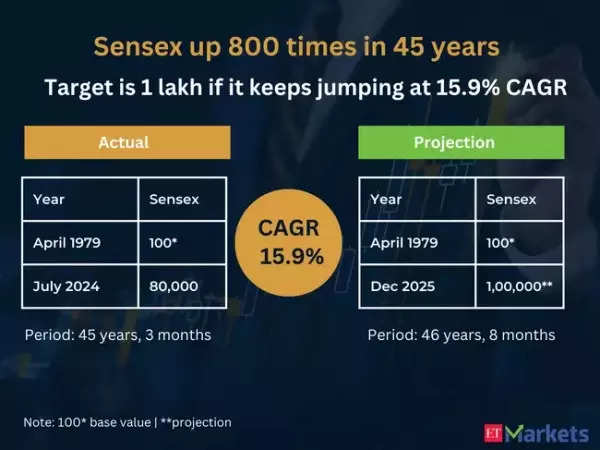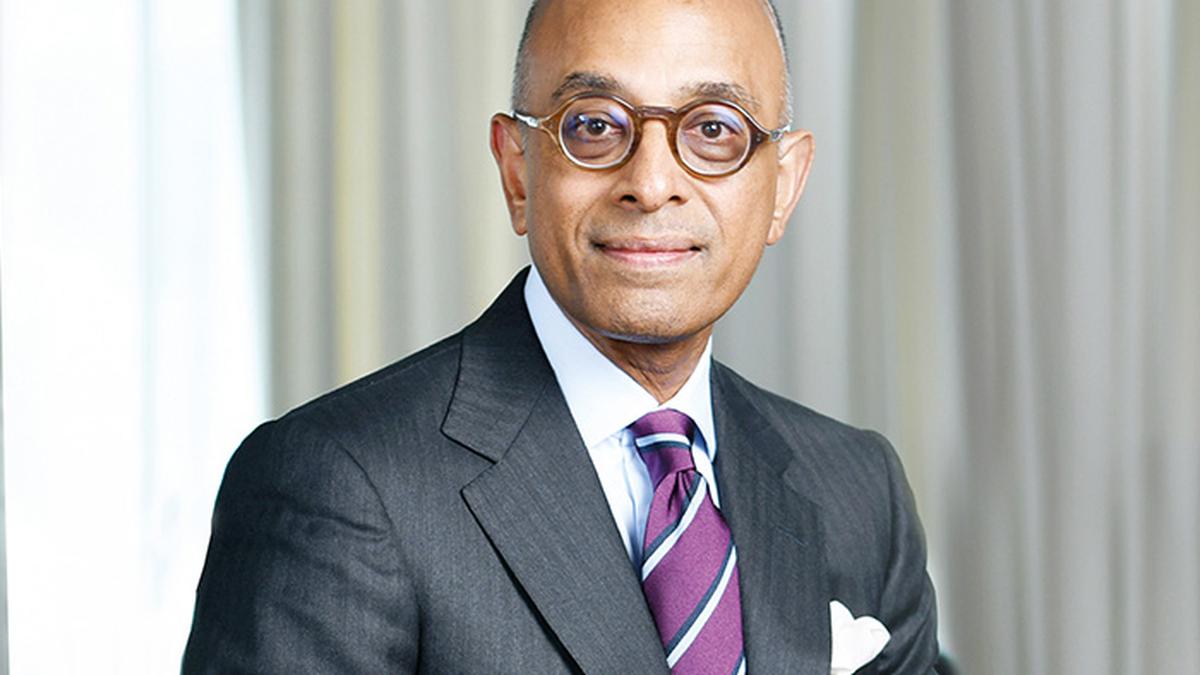With the April 1979 base value of 100, the Sensex has experienced a remarkable 800-fold increase! If the Sensex maintains its current growth rate of 15.9% per annum, it could hit the 1-lakh milestone by the end of next year, an ET report states.This projection does not account for the dividends declared by Sensex constituents, which investors may choose to reinvest in the market.
In the short term, the Sensex’s trajectory will likely be influenced by factors such as the Budget, the Fed’s rate cut trajectory, and the US Presidential elections. However, taking a long-term view, the growth trajectory appears to be intact, despite short-term fluctuations.

Sensex at 1 lakh?
Launched on January 1, 1986, with a base value of 100 as of April 3, 1979, the Sensex has only experienced 6 instances of negative returns since 1996. Over the last 5 years, the index has doubled in value from around the 40,000 mark.
Raamdeo Agrawal, a veteran of Dalal Street and co-founder of Motilal Oswal Financial Services, began his journey in the world of stocks in 1979, the same year the Sensex was constituted.
Also Read | Sensex at 1 lakh milestone this term? BSE Sensex jumped 93% during Nirmala Sitharaman’s first stint as FM!
His earlier calculations suggest that if the Sensex continues to double every 5 years, it could reach 1.5 lakh by 2029. In an ET column from April, he wrote, “India’s corporate sector profit has compounded at almost 17% over the last three decades. It is reasonable to expect 15% corporate profit growth going forward. If current P/E levels of 25x are maintained, this too, translates to the Sensex compounding of 15% i.e. double every five years. In other words, the Sensex level of 150,000 around the year 2029.”
Mark Mobius, a renowned emerging markets investor and India bull, concurs that if India grows at 7% and companies grow at 14-15%, the index will also rise at that pace over the next 10 years. In an earlier interview with ET Markets, he stated, “We are still on that upward trajectory. There will always be corrections, but we are still in that direction (towards 1 lakh). We will hit that. Maybe even before five years. India may be an exception in terms of moving faster.”



)
)




